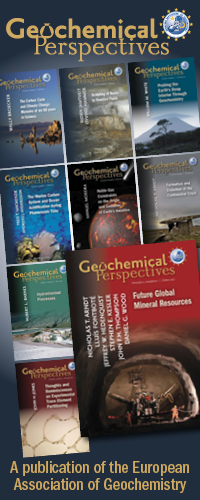
Pressure-induced ion pairing in MgSO4 solutions: Implications for the oceans of icy worlds
C. Schmidt, C.E. Manning
At ambient temperature, liquid water transforms from a low-density to a high-density dynamic structure at ~0.2 GPa. The transition persists in electrolyte solutions; however, its effects on solute properties are unknown. [...]
Stable vanadium isotopes as a redox proxy in magmatic systems?
J. Prytulak, P.A. Sossi, A.N. Halliday, T. Plank, P.S. Savage, J.D. Woodhead
Recycling pathways of multivalent elements, that impact our understanding of diverse geological processes from ore formation to the rise of atmospheric oxygen, depend critically on the spatial and temporal variation of oxygen fugacity (fO2) in the Earth’s interior. [...]
Direct sensing of total alkalinity profile in a stratified lake
M. Ghahraman Afshar, M. Tercier-Waeber, B. Wehrli, E. Bakker
We demonstrate the direct detection of a total alkalinity depth profile through the use of an integrated thin layer electrochemical modulation instrument which acts as an alkalinity sensor. The technique uses a chemically selective proton pump that alters the concentration of hydrogen ions [...]
Late accretion history of the terrestrial planets inferred from platinum stable isotopes
J.B. Creech, J.A. Baker, M.R. Handler, J.-P. Lorand, M. Storey, A.N. Wainwright, A. Luguet, F. Moynier, M. Bizzarro
Late accretion of chondritic material to differentiated planetary bodies is thought to have been common in the early solar system. However, the timing and scale of admixing this material to terrestrial planets are poorly constrained. Using platinum (Pt) stable isotope data in a range of solar system bodies [...]

















 reduced registration rates at
reduced registration rates at 










